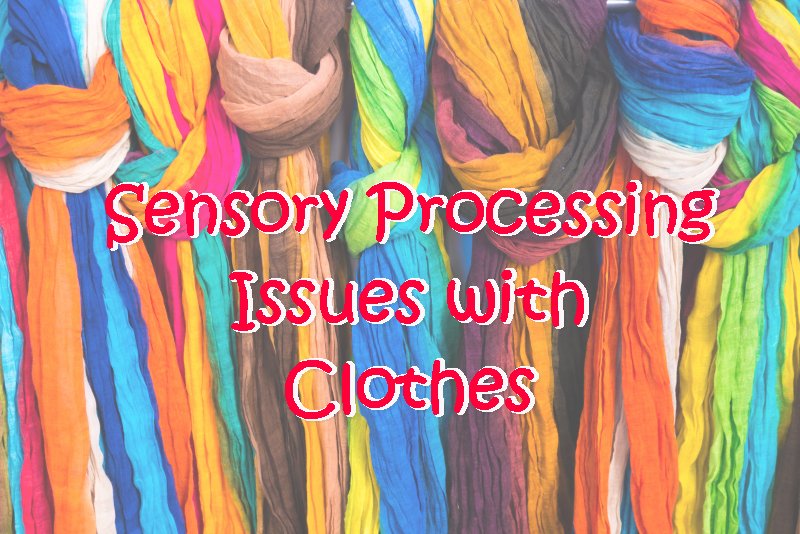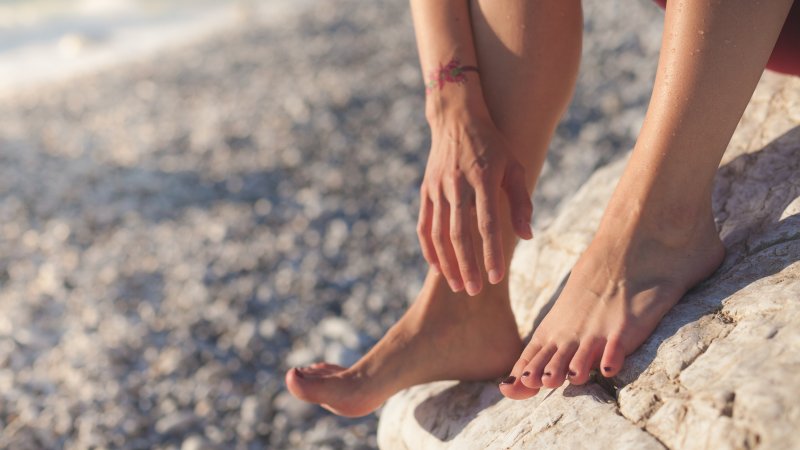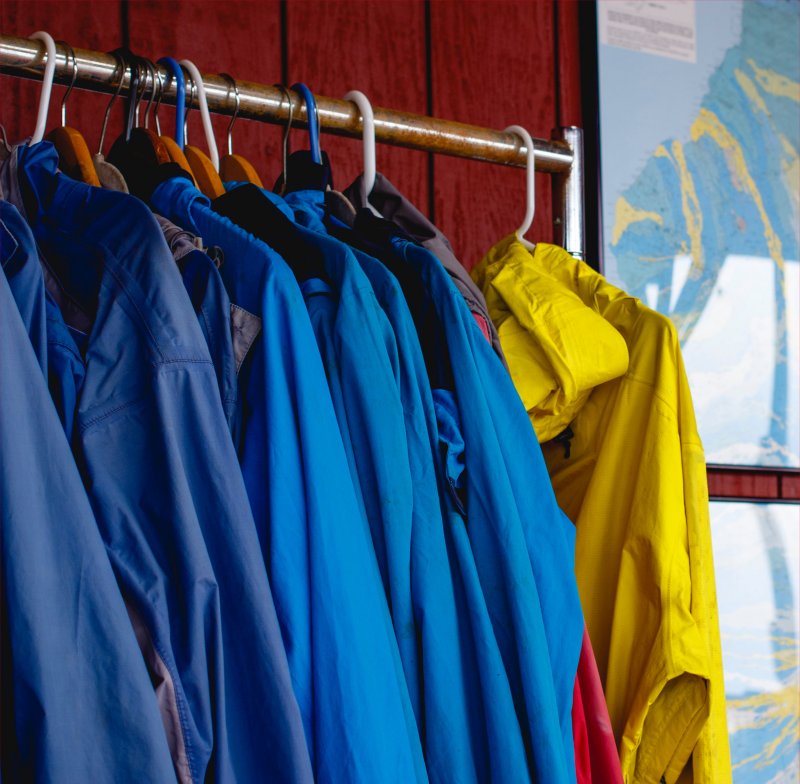When it comes to Sensory Issues I guess their clothes is one of the first things that comes to most people’s minds that could be a problem. The thing is when it comes to Sensory Processing Disorder and clothing is there’s a lot more to it than annoying labels and seams in socks.

Sensory Processing Disorder is the inability of the brain to filter out the senses which it does and doesn’t need. This includes touch, taste, smell, hearing, sight, movement and balance plus sense of body position. Each one could be filtered out too much or too little and those with Sensory Processing Issues have to get the right Sensory Diet to help counteract this. When it comes to clothing the individual may be a Sensory Seeker, a Sensory Avoider or fluctuate between the two. It is important with all things related to Sensory Processing Issues that the individual has their needs met. Keep a diary to work out when and how this will be best for them and this will help work out how to deal with day-to-day things like brushing their teeth and hair – and of course getting dressed.
Identifying the Individual who has Sensory Processing Issues with Clothes
Now the individual with Sensory Processing Issues may never want to wear clothes and would be quite happily naked all the time, stripping off at every opportunity or they may like clothes tight against their skin, layering up and not want to take them off. The important thing is listen to them (this may be with actions rather than words) and let them guide you to what are their sensory needs.
Signs to look out for include:
- Taking their clothes off when they can or hate being naked
- Wants to be barefoot or never wants to take their shoes off
- Always tucking their clothes in
- Not wearing warm clothes in the cold
- Wearing too many clothes in the heat
- Keep wearing the same clothes over and over again
- Picking or sucking their clothes
Buying clothes for those with Sensory Processing Issues
When buying clothes for those with sensory processing issues there are some things to keep in mind to make life easier:
- Consider shopping for specialist sensory clothing – including seamless socks, weighted jackets and compression clothing.
- Take the individual with Sensory Processing Issues shopping with you. This means that they can have a say on what they do and do not want.
- Even if they cannot talk you can gage their reaction to thinks such as the texture of the materials. If they can try them on even better – this not only ensures that the pressure is right for them but also whether they can put the clothing on and off by themselves.
- With this in mind think about the fastenings – are they buttons, Velcro, laces, zips, poppers or elasticated? And if they hate keeping clothes on will you consider buying fastenings that they can’t undo to prevent them stripping? Is a belt an idea?
- Let them have the control to choose and if they tell you that the size does not fit (even if it looks perfect) try to accommodate what they say (obviously not if they want trousers so long they are going to trip over them or shoes 4 sizes too small!)
- How tight are the clothes? Around the ankles. Cuffs, waist and neck for example? Does the individual with sensory issues prefer it tight or lose? This could be the difference between boxers or briefs; sports bra or underwired bra? Do they want the clothes to be able to move around or hug the body?
- How much of the body is covered? Do they prefer the air to touch their skin/or are irritating by the feel of clothing and opt for short sleeves and trousers? Is it better for them to have long sleeves/trousers? A dress would mean less of the material touching the body. Buy lots of layers if needs be – with a safe base layer at the bottom of acceptable touch/pressure (including with underwear and socks).
- How warm are the clothes and what is the weather like? If the individual with Sensory Issues does not like clothes maybe thermal clothing would help to keep them warm whilst wearing less.
- Consider shopping in second hand shops for the individual with sensory issues with clothes, as they have been washed many times and this can change the texture.
- When it comes to shoes they may want the sensory input and so laces will help them feel tight and secure. But if they are unable to do up laces then Velcro may be a better option. If they do not like the feel then slip on shoes would be a better choice. Another choice is to consider a brand of barefoot footwear which is the most like not wearing anything on the feet sensory-wise but without the disadvantage of hurting the feet (on broken glass etc).
- When you find clothing that the Individual with Sensory Issue likes then buy in bulk, including the size they are (for when they are dirty) and bigger sizes (if they are still growing). Consider whether a change of colour will make a difference, but if unsure it is best to stick to exactly the same garment. You may also wish to cut out any labels to avoid irritation.
Other things to Consider for Individuals with Sensory Issues with Clothing
- Be careful how you wash the clothes – ensuring that the smell is right, and how it may affect the texture (deciding on whether to add fabric conditioner). Again if you use a tumble dryer consider how this will alter the texture and smell – but also be careful not to shrink it too!
- Pick your battles and set boundaries. Ask yourself whether it really matters whether they are wearing clothes in the house, if they have a jumper on or if their clothes do not match/look silly. Focus on things that you feel do matter and have rules – like answering the front door/sitting at the dinner table having a pants on rule.
- If the individual with sensory issues does not like wearing clothes then make getting dressed as part of their routine. Utilise dressing-up clothes, especially if they are available in their special interest. Allow them plenty of time and slowly get them to wear clothes for longer and longer. Or the opposite – for taking them off.
Pressure for the Individual with Sensory Issues Prior to getting Dressed/Undressed
As I stated at the start a sensory diet is really important and other things apart from the clothes can have a massive impact on the individual with sensory issues that can affect how they feel about them. The touch on the skin prior to getting dressed (or after getting under-dressed) can change how the individual reacts and may be able to prevent a meltdown. A light-touch can be alerting and deep-pressure is calming. You could try techniques such as brushing and swaddling or rubbing down with lotion.
I have been really lucky with The Sensory Seeker and he just likes clothes to be tight and tucked in so I have never had to buy any specialist clothing. Personally I cannot stand long sleeves and tend to live in vest tops and put a jumper on and off as required. As soon as I get home I strip down to whatever is acceptable, starting with my shoes and socks as soon as I walk through the door. If I get too hot and irritated I get to the point where I feel I cannot breath and get very snappy. I have never been diagnosed so would be interested to hear how others feel. I am a practical clothes wearer and you can read about my struggle with jeans lately. I have also got a coat which I love as it has a bit around the waist which pulls it in closer, stopping the cold air getting in. The sleeves also have extra bits to slip my hands into – ironically I like these as I hate things touch my arms – but I don’t like to wear the coat when driving.
If you know of good places to buy clothes for the individual with sensory issues or have any more problems or advice on this issue I would love you to comment below; thank you.




